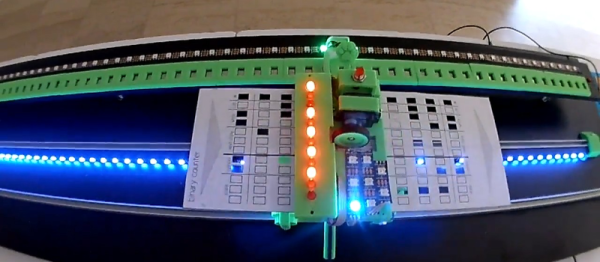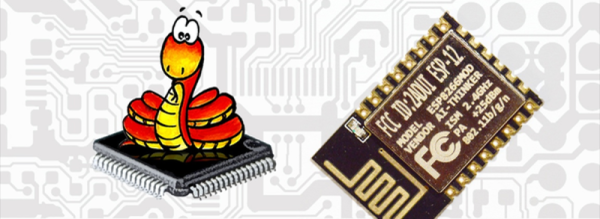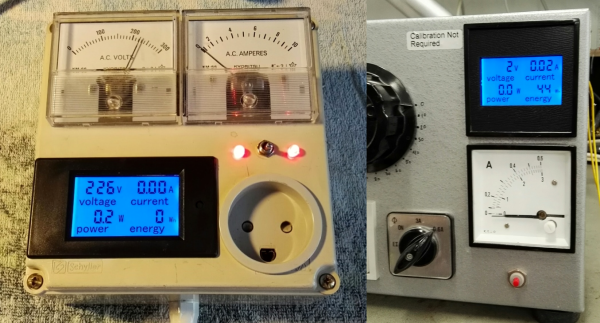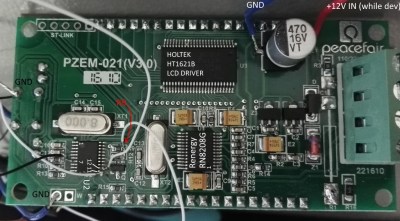Mathematicians. If you let them use the concept of infinity, there’s almost nothing they won’t be able to prove. Case in point: the Turing machine. The idea is that with an infinite length of tape, one could build a thought-experiment machine with only a few instructions that should be able to compute anything that’s computable.
[Igor]’s Turing machine is one of the nicest we’ve ever seen built. The “tape” is significantly shorter than infinity, which limits the computations he can achieve, the use of 3D printing, electric contacts, and WS2812 RGB LEDs for the tape are profoundly satisfying.
A bit on the tape is portrayed as unused if the LED is off, zero if it is red, and one if it is green. Each station on the tape is indexed by a set of blue LEDs observed by the gantry of the writing head which uses a 3D printed finger and motor to change the state of each bit. Programs are stored on a home-built punch card, which gets extra geek points from us.
Watch it run through “busy beaver” (embedded below) and tell us that it’s not awesome, even if it is a couple of LEDs short of infinity.




















